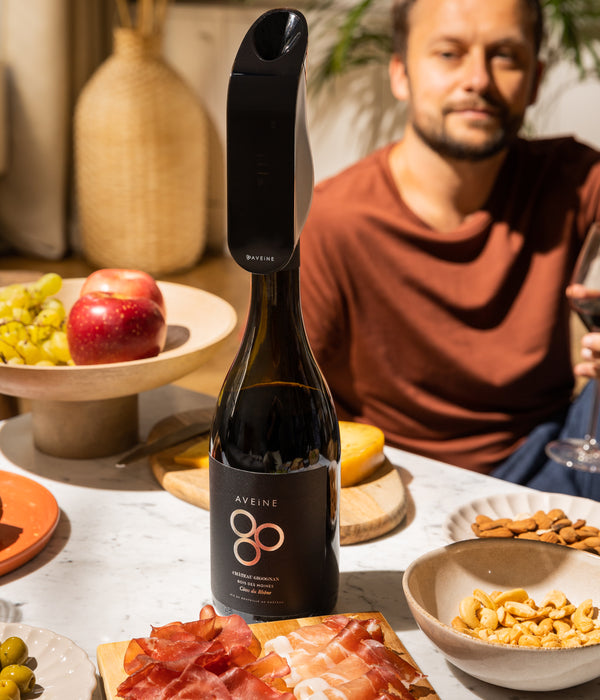Why should you aerate your wine?
Aerating wine is a key part of the tasting experience, on a par with temperature. Unfortunately, it’s often neglected due to a lack of time. But what are the benefits?

Do you take the time to aerate your wine before you drink it? While this should be the norm for any wine lover, it doesn’t often happen. It’s not always that easy to decant a bottle multiple hours before it’s drunk. And yet aeration is often essential.


Aerating wine: a key part of a successful tasting experience
Aerate your wine and the flavour will be ten times better on the nose and palate. The bouquet will also open up beautifully. As a wine lover, you’re bound to have experienced this already. Ever noticed a significant difference between the first and last glasses of wine out of a bottle during a dinner? Aeration is mainly responsible.
How does aeration work?
Aerating a wine means giving it oxygen. In the 1800s, French scientist Louis Pasteur said: “It is the influence of oxygen that causes wine to age”. What happens is the oxygen makes aromas more volatile, which in turn makes them spread. Contact between the wine and the air also allows new aromatic compounds to develop, making the wine more complex.
But this isn’t the only benefit of aeration! Importantly, it also softens tannins. This makes your wine less astringent so you can really savour it.
« It is the influence of oxygen that causes wine to age. »
Which wine should be aerated?
Young wines are in most need of aeration. Our drinking habits are changing and we’re consuming younger and younger wines. But the short period between bottling and drinking gives the wine less time to reveal its full potential and develop its complexity. Hence why aeration helps your wine’s flavours open up.
What about colour? Aeration is especially important for red wine as it can soften the tannins that sometimes make it astringent on the palate. But red wine isn’t the only kind that benefits from aeration! White wine becomes more balanced when aerated, especially if a little too acidic.
Aerating wine in a decanter
The traditional way of aerating wine is to pour it into a decanter. You simply pour the whole bottle out and wait for the oxygen to work its magic. However, you can’t control the effects on the wine, which can easily end up over-aerated, making it stale and boring.
Another problem with decanting wine is the time needed: most wines require several hours of aeration. A decanter can’t work miracles if you don’t give it enough time. So, it’s not a good fit if you need to be spontaneous. Cleaning a decanter can also be hard work because of their shape and fragility.
The Aveine wine aerator: the ideal tool
With the Aveine wine aerator, you can instantly achieve perfect levels of aeration. The aerator precisely reproduces the effects of 1 to 24 hours in a decanter. There’s no need to wait around patiently: just pour the wine with the device on the bottleneck. And, unlike with a decanter, you can’t get it wrong. Only the wine you’ve poured out is aerated: the rest of the bottle isn’t. This means you can test the same wine out at different levels of aeration and only serve it once you've found the right level for you.
It’s also easy to maintain the aerator: just rinse it off in clean water after use. To charge it up, plug it into the mains and you’ll enjoy the benefits of high-precision aeration for every glass of wine.

Wine aeration faux pas
Note that not all wines should be aerated! Old wines are more fragile. Aerating them will lead to hyperoxygenation, which will dullen the flavour and destroy the wine's balance. These wines need to be decanted to remove the sediment, exposing them to as little oxygen as possible.
